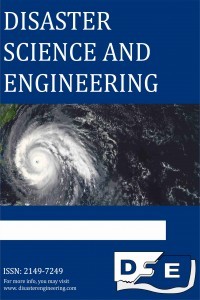Earthquake Performance Based Design And Resilience Based Analysis in High-Rise Buildings
Earthquake Performance Based Design And Resilience Based Analysis in High-Rise Buildings
Recently, high-rise buildings are designed and built increasingly in Turkey. However, during the design stage of these buildings, the common question is how these buildings will continue to serve to the residentials after a potential major earthquake. Many problems are encountered in the design process. As the buildings height increase, the structural system must cope with the two important issues. One of them is wind and the other is earthquake. Design engineers managed to win the struggle with these two issues in some extent with the development of dynamic isolation technology and one by one model building tests. However, how the buildings will continue to serve after the earthquake, how and how these will be reflected to the investor were not much thought. In the literature, especially in the recent years there are several studies on the post-earthquake building use performance studies. Traditionally, the structural system of all high or not high buildings in Turkey is formed from reinforced concrete shearwalls and frames. There is a new earthquake regulation that came into force on 1 January 2018 in Turkey for the design of tall buildings under a possible earthquake (TBDY 2018). In addition, the international resource “Tall Buildings Initiative” (TBI), 2010 is also used. These regulations require the application of performance-based design principles for tall buildings and also require the structural system to be designed by nonlinear time history analysis. When we look at the building stock in our country and the new buildings under construction, we observe that there is a very intense construction. Most of the buildings that comply with the regulations are designed to provide life safety, not to prevent injuries, limit damage or ensure rapid regeneration. For example, in the new earthquake regulation, it is required to provide “Controlled Damage” performance level at DD-2 level, also called “design earthquake”. Controlled Damage is defined as the level of damage that is not too heavy and mostly repairable, in order to ensure life safety in the regulation. The main task of the design engineer is to ensure life safety in the building. However, the expectations of people from an engineer are far above them. Terms such as durability, planning and preparation, post-disaster use are becoming increasingly important elements for building owners. Therefore, regulations were conducted to analyze the state of the buildings after the earthquake. One of these studies, the USRC Rating System, calculates the building residence and removes important missing information to assist those using the structure, planners, building owners and insurers. In this study, it is aimed to present the structural system performance of a high-rise building, which is described in detail in other sections, as well as the structural performance of the building after the earthquake, and the grading of the non-structural elements and the time and cost calculations required for the building to serve. Architectural and mechanical components can account for over 70% of property damage to a building. Loss expenses and down-time costs may exceed the value of the buildings.
Keywords:
Assessment of earthquake Performans, Nonstructural components, Structural components Resilience, Hazard,
___
- USRC: US Resiliency Council (2016)
- REDI: Resilience-based Earthquake Design Initiative (ARUP)
- P58 FEMA (2002): Next-Generation Building Seismic Performance Assessment Methodology, RO
- Sir MPSO's Hamburgers Gumpertz & Heger Inc., San Francisco, CA, USA, CA. Rojahn and Jim Heintz Applied Technology Council, Redwood City, CA, USA, MG Mahoney Federal Emergency Management Agency, Washington, DC, USA
- Seismic Performance Assessment of Buildings Volume 1 - Methodology Prepared by APPLIED TECHNOLOGY COUNCIL 201 Redwood Shores Parkway, Suite 240 Redwood City, California 94065www.atcouncil.org
- Performance Based Design For Hearlthcar to Facilities, Djima1 Wilfrid G., A. Can Zulfikar1, Cuneyt Tüzün1,2019
- Seismic Performance Assessment of Buildings Volume 2 - Implementation Guide Prepared by APPLIED TECHNOLOGY COUNCIL 201 Redwood Shores Parkway, Suite 240 Redwood City, California 94065 www.atcouncil.org
- ACI (2008) Building Code Requirements for Masonry Structures and Specifications for Masonry Structures, ACI-530-08, ASCE 5-08 / TMS 402-08 (2008), Masonry Standards Joint Committee of the American Concrete Institute, American Society of Civil Engineers, and the Masonry Society, Farmington Hills, Michigan
- Emre soil, evaluation of time lost after the earthquake and precautions on 29-30 May 2019, Istanbul Branch of Chamber IMO
- ACI (2011), Building Code Requirements for Structural Concrete and Commentary ACI 318-11, American Concrete Institute, Farmington Hills, Michigan
- ASCE, (2002), Minimum Design Loads for Buildings and Other Structures, ASCE / SEI 7-02, the American Society of Civil Engineers, Reston, Virgin
- PEAR Ground Motion Database (Pacific Earthquake Engineering Research Center)
- Yayın Aralığı: Yılda 2 Sayı
- Başlangıç: 2015
- Yayıncı: Emrah DOĞAN
